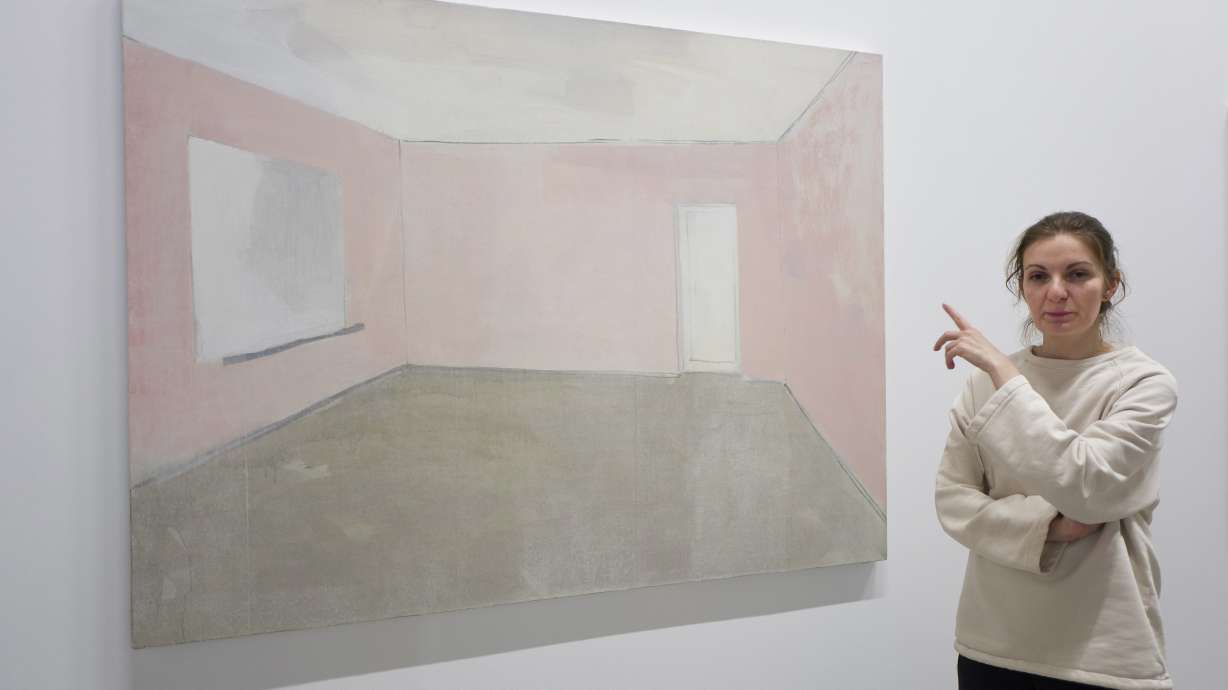Estimated read time: 3-4 minutes
This archived news story is available only for your personal, non-commercial use. Information in the story may be outdated or superseded by additional information. Reading or replaying the story in its archived form does not constitute a republication of the story.
MOSCOW (AP) — In a story March 11 about a Russian art show, The Associated Press incorrectly spelled the name of an artist. The artist's name is Aslan Gaisumov, not Aslan Gaimov.
A corrected version of the story is below:
Review: Russian 'Triennale' striking in its diversity
Art Review: The contemporary art museum Garage opened its first "Triennale" on Friday with works from across Russia's 11 time zones, and they were striking in their diversity — perhaps surprisingly in today's political context
By KATE DE PURY and EKATERINA CHERNYAEVA
Associated Press
MOSCOW (AP) — The contemporary art museum Garage opened its first "Triennale" on Friday with works from across Russia's 11 time zones, and they were striking in their diversity — perhaps surprisingly in today's political context.
Garage sent curators to gather works for the ambitious show aimed both at energizing the art scene at home and establishing Russia abroad.
The exhibit by nearly 70 artists encompasses painting, sculpture, video, installation and conceptual works, mostly after 2012, and is a dizzying montage of the different cultures from within Russia's borders.
Works by artists from Siberia, the Far East and Chechnya sit beside those from Moscow, with obvious differences.
And that's exactly the point, said Dasha Zhukova, who along with her husband, tycoon Roman Abramovich, founded the Garage in 2008. The pair mingled with artists and Russia's cultural elite in the sleek, modern gallery in Gorky Park.
Abramovich might still be close to the Kremlin, which keeps careful control of Russian culture, but Zhukova rejects a "singular vision," saying she wants the Triennale to offer a platform for different voices "to agree and disagree."
Among the 68 artists with work on display through May 14 were some first-time exhibitors in Moscow; others are rising stars on a global scale.
Irina Korina's massive installation, "The Tail Wags the Comet," dominated the atrium. A labyrinth of stairs and walkways, dotted with tiny "shrines," leads to a space hung with boiler suits, or a lighted chamber where people's shadows inhabit a rocket-shaped window, seen from outside.
Trained as a theater designer, the 40-year-old Korina has exhibited in New York, London and Europe. She said her work is strongly linked to Russia.
"It is the reality around me, and this reality is my raw material," she said.
For Taus Makhacheva, her native Dagestan exerts a strong pull and her work, "The Way of an Object" (2013), references its history with reimagined museum objects.
Makhacheva, 34, trained in London and exhibits in Europe but said she always ends up going back to Dagestan's thriving arts scene, despite violence from an Islamic insurgency in the region.
Aslan Gaisumov said coming from Chechnya does not define him as an artist. His work, "Numbers," arrayed house numbers from prewar Grozny across a wall.
He uses the history of Chechnya in his work, but told The Associated Press: "It's about broader themes of what is history, memory, war."
Svetlana Shuvaeva said she thinks of herself as an artist first and foremost — "a Russian, if you must, but also international."
"It doesn't make any difference, just as the age of an artist doesn't make any difference — an artist is an artist," she said.
The Moscow-based Shuvaeva's installation, "It's OK to Change Your Mind" (2016-17), uses 150 painted canvases of images found in daily life to suggest an ornamental reality that conceals nothing underneath.
Roxana Marcoci, senior curator from New York's Museum of Modern Art, said it's a show full of energy and new discoveries.
The exhibit "maps Russia today as a place grounded in multiple cultures," Marcoci said. It may be disjointed, uneven and possibly chaotic, she added, but art should be disruptive.
Is it disruptive enough to carve out its own place on the international art stage?
"Russia is a very young place. It's undiscovered territory," said critic Arie Amaya-Akkermans, who points to the isolation of Soviet era art.
"There was a disconnect for a very long time, and only now it's slowly catching up," he said.
Copyright © The Associated Press. All rights reserved. This material may not be published, broadcast, rewritten or redistributed.









